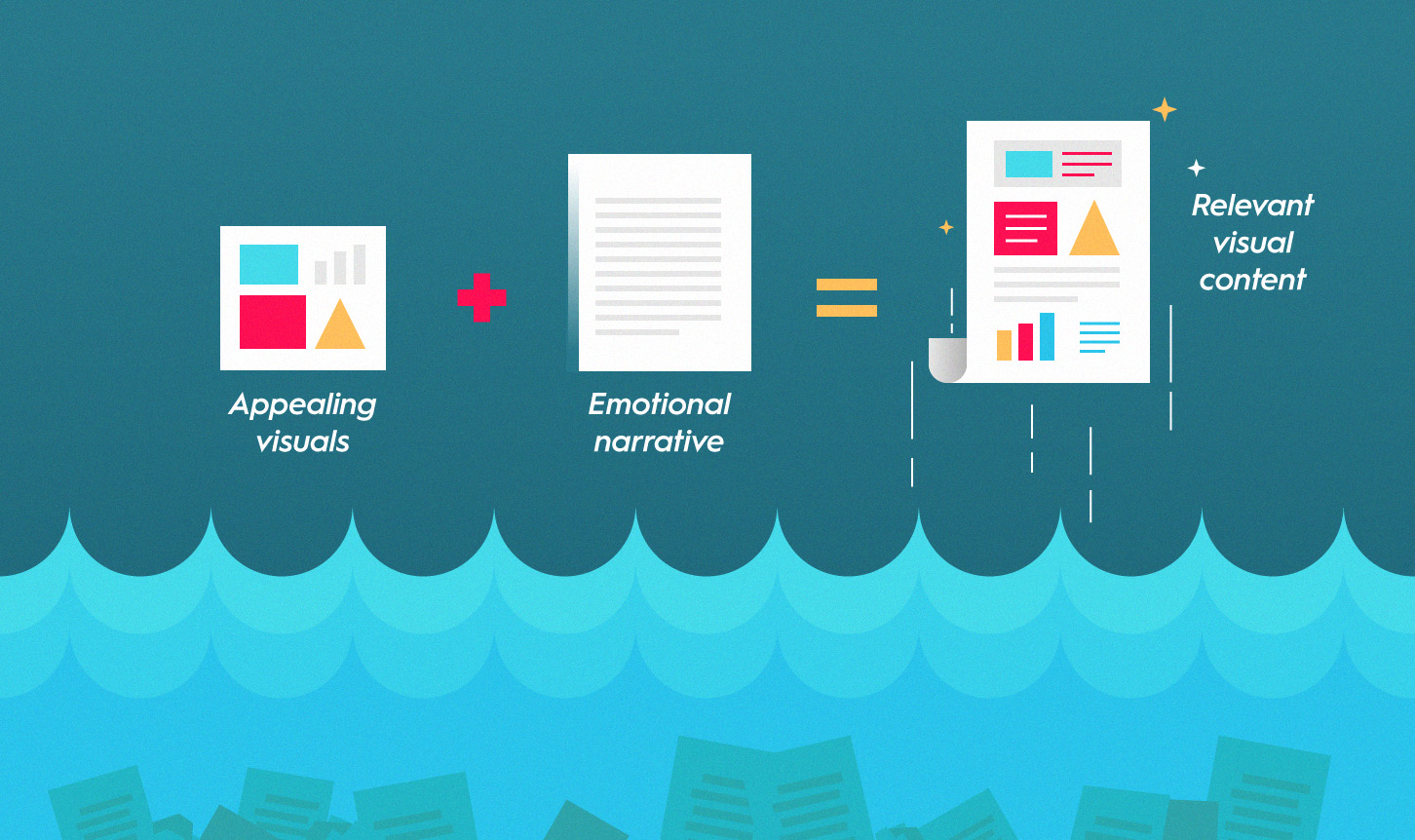
We are genetically wired to decipher our world through visuals. It’s thought that upwards of 60% of people fall under the category of visual thinkers.
We tend to understand images instantly because they allow us to see complex relationships in new relatively simple ways.
It’s such an exciting time we live in. we have technology that allows us to efficiently convey volumes of data and information through visual communication. But reaching a balance and understanding the visual medium is not simple.
In this article, we will talk about the steps you need to create successful visual storytelling campaigns.
Competing for consumers with diminishing attention spans
 Our brains can quickly scan, save, and recall visuals. These subconscious responses of the brain have helped us survive through remembering crucial and life-threatening situations in form of images.
Our brains can quickly scan, save, and recall visuals. These subconscious responses of the brain have helped us survive through remembering crucial and life-threatening situations in form of images.
 In this age of information overload, our brains still crave visual stimuli. Going through the infinite stream of media, the use of visualization becomes almost necessary to attract attention and retain it for more than 8 seconds.
In this age of information overload, our brains still crave visual stimuli. Going through the infinite stream of media, the use of visualization becomes almost necessary to attract attention and retain it for more than 8 seconds.
With that in mind, we need to identify how to make use of visuals to tell the story of your brand. All while staying relevant to your target audience. When a reader comes across your content, they must get value from it and feel the urge of sharing it with people who matter to them. That’s how you know your content is actually interesting and valuable.
The Magic formula that makes your visual content relevant
This formula has two simple ingredients. When combined together, they’ll help your content rise above the sea of mediocre posts:
 The visuals are there to capture the reader’s attention.
The visuals are there to capture the reader’s attention.
The narrative is there to relate to the reader and provide value.
It doesn’t matter if your brand is big or small, this will always work.
Why?
Because when your content invokes feelings, the consumer will think “This brand gets where I’m coming from and they’re providing something of value that relates to my situation”.
With time, more content will click with your consumer, building trust and credibility. And eventually, they’ll become ambassadors of your brand.
With that said, in order to make the formula work, it’s essential for all brands, big and small to KNOW their target audience. Identifying what is “value” for your consumer is a key step. So you need to figure out effective ways to get that information about each audience you want to connect with. You can do that through social media, surveys, micro-content, social events – whatever makes sense for your current situation.
Digging the visual story out of bland data
People are obsessed with stories. To resonate with your audience, you have to take advantage of that obsession. Your audience will not connect with you if you’re a mindless data factory with nothing original to say or show.
 All the stories that successful brands tell have four things in common:
All the stories that successful brands tell have four things in common:
They affect how we feel: Stories require emotional investment.
They affect how we think: Stories pique and retain interest.
They affect how we behave: Stories energize the message.
They affect how we act: Stories push us to take action.
So it becomes clear why those who think strategically about visual storytelling are always in tune with their customers’ needs.
The question to be asked then: How can you find and tell your story?
The answer is authenticity.
Your priority before even trying to recognize the stories is to do some soul-searching. Find out what is the core value of your business.
Dare to ask the hard questions and look for what deeply moved you in the first place to start a business. Next, you need to formulate a message. Boil it down to one sentence.
After you identify who you are and the message you’re trying to deliver, it’s time to tell that story to your audience. The challenge is to tell it in a way that aligns with your audience’s interests AND be authentic to you.
Remember, you only have moments to capture their attention, so the content presenting the story must be carefully constructed.
Visuals and storytelling are the two most useful tools a marketer can use to achieve successful campaigns. The whole process definitely takes effort, hard work, and a lot of optimization. But in the long haul, the result will be worth it.
So let’s end this with some practical steps to follow:
1- Take a pen and paper.
2- Write down your core values when it comes to your business.
3- Boil everything down to one sentence.
4- Make a list of content ideas that you think will bring value to your audience.
5- Put in a narrative that aligns with your message.
6- Make appealing visual content to deliver the package.
Feel free to comment your thoughts or drop us a message. We’re here to chat!
Hamza Abdelhak
Latest posts by Hamza Abdelhak (see all)
- The Best Inspirational Podcasts for Your Commute - October 28, 2021
- Tim Ferriss’s Not-To-Do List: 9 Habits to Stop Now [Infographic] - June 4, 2018
- 10 Reasons Why Every Content Marketer Should Use Infographics - April 30, 2018

